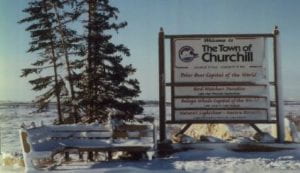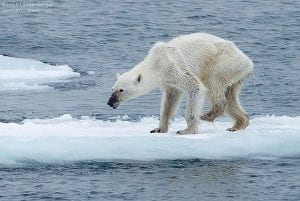Churchill, an Arctic town in northern Manitoba, Canada, has long been famous for its polar bears. However, due to climate change, the polar bear population of the “Polar Bear Capital of the World”, has decreased, and will continue to dwindle.
One of the most well-studied effects of climate change has been longer summers, especially in the Arctic. Due to a phenomenon named arctic or polar amplification, greenhouse amplification, from excessive production of CO2, will lead to increased temperatures near the poles, beyond the average of the planet. In the research of Rantanen et al, the team found that “During 1979–2021, major portions of the Arctic Ocean were warming at least four times as fast as the global average“. While there is no single cause of the phenomenon, one of the most frequently cited causes is the loss of sea ice. The loss of sea ice reduces the albedo, or ability to reflect heat rather than absorb it, as the dark ocean absorbs more heat than the reflective ice. The warmer temperatures will also prolong the period of ice melt, extending summers in the Arctic.
Located on the southern edge of Canada’s Arctic, Churchill, and the lives of its polar bear inhabitants have been severely altered due to the prolonged summers. Polar bear’s ideal food is the fat of seals, which provides them with the required energy to maintain their mass. However, they typically catch the seals best on ice, which can be hard to come across. While some believed that polar bears could harness the abilities of their relatives, the grizzly bear, Washington State University’s research on 20 different polar bears proved the notion far from the truth.
While some of the polar bears simply rested to conserve energy, in a similar fashion to hibernation, other bears actively searched for food. While some females spent as much as 40% of their time foraging, including a 175 km swim from one bear, their expenditure was simply not worth it. The bears could not eat their findings while swimming, nor bring them back to land. Because they had to travel so far, they had to spend even more energy than they would catching seals, while consuming far less energy.
As the study shows, prolonged ice-free periods will increase starvation amongst polar bears, impacting the size of their population. During the study, the experienced weight loss, on average, was 2.2 pounds or 1 kilogram per day. In addition, when other researchers surveyed the polar bears in 2021, they “estimated there were 618 bears, compared to the 842 in 2016, when they were last surveyed.” It’s likely the bears had starved, as they are being forced onto land earlier, cutting into their typical period of gathering energy.
Remember, there are still ways we can help to combat climate change. You can reduce your carbon footprint by conserving energy at home, like turning off the lights when not in use. Using public transportation more often or switching to an electric car can reduce the CO2 emissions from your personal vehicle. Renewable energy, such as solar, is also effective in reducing our reliance on fossil fuels. Let’s take action today, and help make our planet more suitable for all of its inhabitants.




Leave a Reply